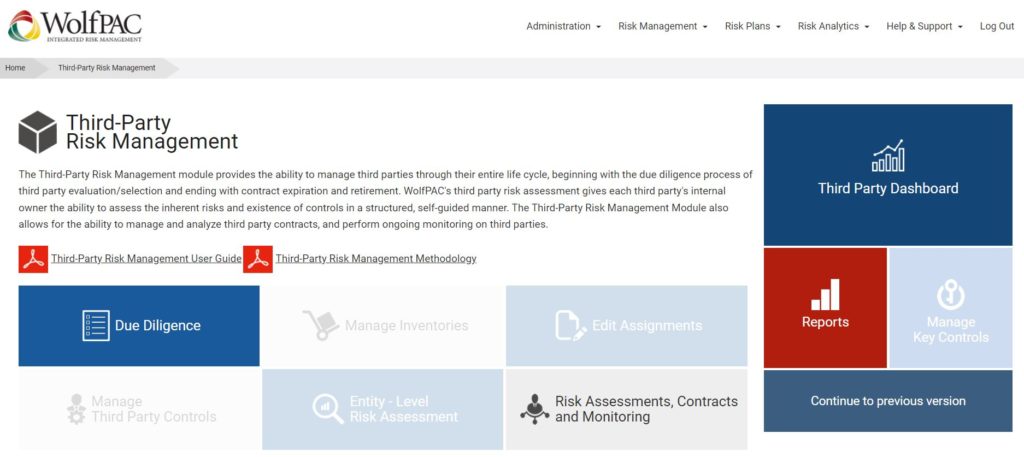3 Ways Your Current Vendor Management Process Is Hurting Your Organization
Is your vendor management process holding your organization back or propelling it forward? Let’s find out! Here are three key areas where many vendor management programs miss the mark:
#1: Doing Too Much
Vendor management is all about knowing who and what to keep a close eye on. Therefore, your vendor management process should be selective. As a result, it shouldn’t include every company you pay for products and services.
 Who to Monitor:
Who to Monitor:
Start by concentrating on vendors that perform operational functions integral to your offering. Vendors like your loan origination software provider should be on the list. Your landscaper should not.
 What to Monitor:
What to Monitor:
Next, you can decide which monitoring activities are necessary to keep your institution secure. Remember, you don’t have to monitor everything available for every vendor. Instead, choose monitoring tasks based on the inherent risk rating for that vendor.
Tip: Use your risk assessment results to prioritize your monitoring tasks.
This strategy will empower you to:
- Properly manage your critical risks; and
- Use your team’s time more efficiently.
Remember, a level of high inherent risk equals more monitoring. Conversely, extensive tracking won’t be necessary if a vendor has a low inherent risk. Imagine that. A risk management program that keeps you safer and saves you time!
#2: Contract Decentralization
Contract decentralization is one of the biggest threats to vendor management process efficiency. Are your vendor contracts spread across many departments? If so, this obscures the holistic view of your vendor relationships. Even worse, there can be vendors that aren’t even on your radar.
 Do you want to know if you have a handle on your contracts? Ask yourself:
Do you want to know if you have a handle on your contracts? Ask yourself:
- Do I know where all my vendor contracts are?
- Can I quickly find a list of all the vendor contracts pending renewal this month?
- Does my team have enough time to decide whether renewing is the best option?
If you answered “No” to any of these, you need to take a hard look at how you manage your vendor contracts. Start by collecting all vendor contracts in a central repository. You can do this via manual means, like a folder on your organization’s network. However, a more efficient option is to use an automated vendor management platform.
A Word of Caution:
Keeping contracts on your network can mean inaccessibility if there is an outage. For example, if you need to pull up a contract to check a vendor’s business continuity process, that’s a problem. As a result, it’s crucial to verify that the data in your network folders is accessible even if your network is not. Keeping duplicate paper copies is a potential alternative. However, this can result in version issues, so update every copy diligently.
#3: Manual Vendor Management
Managing your monitoring activities manually can be time-consuming and inefficient.
- Are you sure you’ve accounted for every relevant activity and every vendor?
- Which monitoring activities are coming up?
- What is the status of each one?
- Who will be doing the work?
- Are high-risk activities prioritized first?
- Do you have the most up-to-date version?
There’s enormous potential for mistakes and miscommunication with a manual vendor management process. That’s because spreadsheets rely on constant checking and verification.
The Solution? Automate your Vendor Management Process
One way to resolve these issues is to adopt an automated vendor management solution. These tools allow everyone on your team to log into the same program and make edits in real-time. This functionality alleviates version control issues and makes life easier and more efficient for everybody involved with your vendor management process.
All the user needs to do is conduct the risk assessment. From there, the system handles prioritization for you based on the results. This functionality helps reduce the time you spend deciding what’s most important to monitor. As a result, you have more time to conduct actual monitoring tasks.
A good vendor management solution will let you set owners for specific tasks. It will also:
- Provide visibility into the progress associated with an activity; and
- Help your team remove any roadblocks.
Vendor management software solutions should also be able to house your contracts. By storing them in a central, easy-to-access location, you’re better able to keep an eye on upcoming renewals.
Your vendor management process should be complete and efficient to support your organization’s strategic goals. By centralizing your contracts, using a risk-based prioritization, and creating efficiencies by utilizing automated tools, you can save your organization time, money, and resources while creating a more robust and effective program.
Take Your Vendor Management Process to the Next Level!
WolfPAC’s Third-Party Risk Management software offering provides customers with a holistic view of their vendor ecosystems. It gives users the power to automate and manage every aspect of their 3rd party relationships from one easy-to-use portal. This includes:
- Vendor due diligence;
- Vendor selection & contract negotiation;
- Contract analysis;
- Ongoing third-party monitoring & reporting; and
- Risk management.
By gaining 360-degree visibility into their vendor relationships, customers can view risk across their entire organization.
